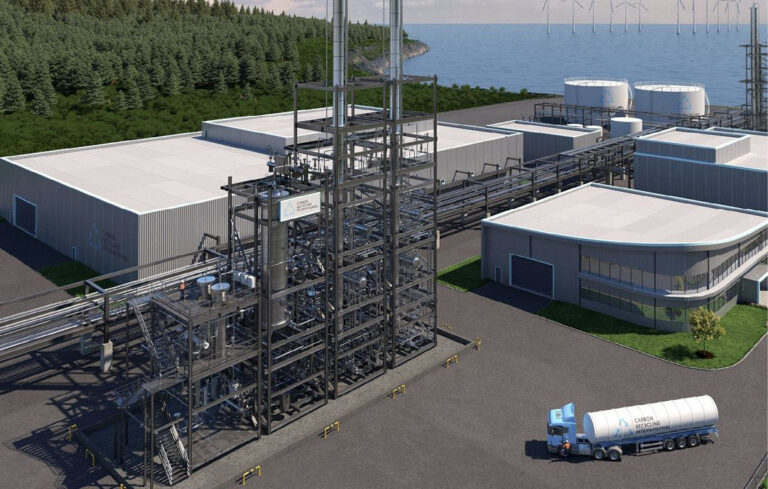The hydrogen economy is complex. With photovoltaisies that are largely devoted to the direct on electricity networks, solar energy-driven hydrogen is generally planned in remote areas with excessive renewable energy. Further steps of the hype requires concept where hydrogen is essential for the energy transition. Government hydrogen strategies often identify green hydrogen as crucial for carbonated shipping, aviation, some long-term road transport, ammonia and steel production and other industrial processes. China also regards hydrogen as essential for long -term energy storage (LDES).
Hydrogen hyperbole
The last six years has brought what the European Hydrogen Association H2UB calls a “peak of bloated expectations” and the “trough of disillusion”. It says that Europe now enters a ‘slope of lighting’ before it reaches a ‘plateau of productivity’.
Hydrogen makes various contributions to “hard to keep” industries. Although essential for the decarient steel, or the ammonia that is used in fertilizers, it plays a lesser, still crucial role in increasing other sectors. That can confuse and polarize the green hydrogen debate.
China and more recently India both quickly move forward with hydrogen in their energy policy. In addition to the limitation of climate change, they are aimed at reducing air pollution and follow a geopolitical strategy away from volatile global oil markets. Europe and other regions are also vulnerable to geopolitical stressors of fossil fuels. Russia has abundant, easy -to -wear oil sources and is one of the world’s largest oil exporters.
As the Energy Research Institute of the Chinese Academy for Macroeconomic Research has shown (see graph below), it is expected that hydrogen plays a small but crucial role in the demand for end use energy until 2060.
Floating forces
Together, shipping and aviation are the primary factors of hydrogen derivatives in so -called low -carbon fuels.
Shipping is ready to largely increase thanks to the green fuel requirements of the European Union. As with aircraft, fuel cells can feed ships directly or via e-fuels such as methanol fuel cells. Most orders are nowadays driven by green fuels for combustion engines, such as hydrogen -derived fuels.
Vitalii Protasov, from the Finnish renewable fuels analysis company Gena Solutions, said that the European Union stimulates regulation for sending carbon collection, but it is noted that the International Maritime Organization (IMO) will also be expected to introduce the Middel -Termto of the Share -Term of the Share Term, the SPEME TEMPLE TEMPLE TEMPLE in 2025, which will be set up by the share Low carbon.
Protasov said that green methanol for direct use, unlike hydrogen, can be sent as easily as fossil fuel -based methanol. The difference is in carbon intensity and price. ‘The problem for [green] Methanol is that there is a huge question potential, especially from the maritime industry, but the volume of binding long -term decrease contracts is very small, “he said.” There are also other problems, such as high costs compared to the conventional fuel. You therefore need a regulation that will stimulate the use of renewable fuel, or a regulation that will prohibit or punish conventional fuels. “
Aviation is demonstrably the biggest challenge of the deck bonization of transport. Batteries have insufficient energy density to provide aviation further than very local small aircraft.
Hydrogen can be used directly, for example in a short distance aircraft, or it can feed the e-fuels used in sustainable aviation fuels (SAFs) and other fuels, as a replacement for limited organic substance. Most airlines started investing in a flight flight to meet recent regulations. Many have also invested in fuel cell aircraft, such as KLM, American Airlines, among others.
In the United States, newly merged regional carriers Alaska Airlines and Hawaiian Airlines work together with hydrogen-electric aircraft company Zeroavia to develop aircraft for short-distance routes. Diana Birkett Rakkow, Senior Vice President of Sustainability at Alaska Airlines, explained that about 15% of the routes on the network of the courier are younger than 500 nautical miles, which means that they can be operated by hydrogen-driven aircraft.
Marina Hritsyshyna, an expert in hydrogen regulation who has worked in the renewable energy law since 2016, said PV Magazine that “the regulating framework is crucial, because it brings a clear path for the development of the energy sector.”
The Refueleu Aviation and Fueleu Maritime regulations play an important role that Hritsyshyna, who also cited EU objectives in Red III, the third renewable energy directive, for renewable fuels. This requires that Member States fulfill specific quotas, “that will facilitate the growth of the hydrogen market,” said Hritsyshyna. “At the same time the implementation of the EU ETS [Emissions Trading System] It is expected to reduce the use of fossil fuels, driven by increasing carbon prices in aviation and maritime sectors. “
Road transport
Hydrogen fuel cells have a higher energy density than batteries, but a poorer energy efficiency in smaller vehicles.
The hydrogen strategies of the United States, Europe and China all see some trucks and buses as use cases for fuel cell vehicles. Infrastructure plays a role here, because electric truck stops using batteries that take so much energy to charge as a small city. Trucking corridors create immediate demand from linked hubs based on hydrogen, which already present workable business cases.
Reinhold Wurster, senior project manager at the German consultancy Ludwig-Bölkow Systemtechnik (LBST), explained how far China has been demanded. With the last five -year plan of China aimed at 50,000 fuel cell vehicles by 2025, Wurster said that most of the 20,000 to 21,000 fuel cell vehicles on Chinese roads are trucks and buses.
“This year, China has to introduce another 30,000 fuel cell vehicles,” said Wurster. “The figures I have seen for the various cluster centers seem to promise that this will be achieved. They want a more complete innovation system for hydrogen technology, whereby clean hydrogen production and stock systems are formed and this system must be matured by 2035.”
The large industry of China
The study “Improving a fair transitional financing system for carbon-intensive industries” focuses on the efforts that relieve Chinese steel and shipping sectors. Commissioned by the German political Foundation Friedrich Ebert Stiftung, researchers from Chinese Duke Kunshan University revealed that hydrogen is already anchored in attempts to decrease Chinese industry, which produce about half of the steel of the world and a third of the worldwide ship volume. The study provides the example of a steel company in Shanghai that “its carbon emissions has effectively reduced 20% and has reduced solid fuel consumption by 30% by energy replacement, process optimization and the acceptance of innovative technologies such as hydrogen -enriched carbon -recycling blast furnaces.”
International path
There are limitations for hydrogen. Fossil fuels Giant BPs “Global Energy Outlook 2024” report was apparent from the “relatively high costs for the transport of hydrogen, especially in its pure form, means that trade in carbon hydrogen is concentrated in relatively localized, regional markets.”
Hydrogen production is driven, for example, by wind energy in Northern countries and by solar energy in South Europe and the Middle East.
For example, the United States have the advantage that they have energy-intensive industry and abundant renewable energy generation potential. It can become a hydrogen exporter.
Pipelines and storage
Hydrogen strategies usually provided pipelines for direct hydrogen transport between neighboring regions. Existing fossil fire structures are often reusable for various aspects of the hydrogen economy. Governments hope to use existing gas pipeline infrastructure or to build new ones. Wurster explained China’s trip in direct hydrogen storage and pipelines. “No country knows better where the limitations of batteries are,” he said. “Ten years ago, they built a high-voltage direct-current transmissive line of 1,800 km from the inner Mongolia in 18 months, with 67,000 towers that support the lines. So China is definitely a country that can build high-voltage direct transmissions lines quickly. [of hydrogen]. This is 10 times which high-voltage direct-current transmission line overhead threads today transport, what 4 GW is … Nobody can ensure that the electricity produced will be available when the consumers need it, and vice versa, and above a certain limit you can no longer keep it in batteries because it will be too expensive and too material. “
The Chinese hydrogen pipeline infrastructure is still in its infancy, said the Chinese media-outlet Sohu.com in January 2025. But the development plan of the country is aimed at 3000 km long-distance hydrogen pipelines against 2030.
China is not necessary for the European Union, the United States or the United Kingdom. Numerous studies have shown that Europe has the potential to excel in various hydrogen technologies, but China is fast. If the West focuses too much attention on political problems in the short term, it loses its competitive advantage.
Regulation expert Hritsyshyna points out: “It is also expected that the European Commission will adopt the clean industrial deal and the Affordable Energy Action Plan in February, in February [2025]. In addition, the European Commission has presented a list with planned initiatives in the Competition Compass, which aims to accelerate the use of clean technologies to achieve climate neutrality in the EU, ”hritsyshyna added.
What does that all mean? It means that hydrogen economies develop internationally. Thinking in the short term will be a disadvantage on the international stage.
This content is protected by copyright and may not be reused. If you want to work with us and reuse part of our content, please contact: editors@pv-magazine.com.
Popular content




